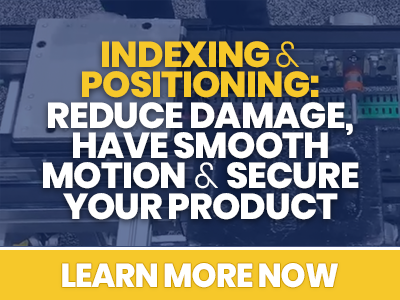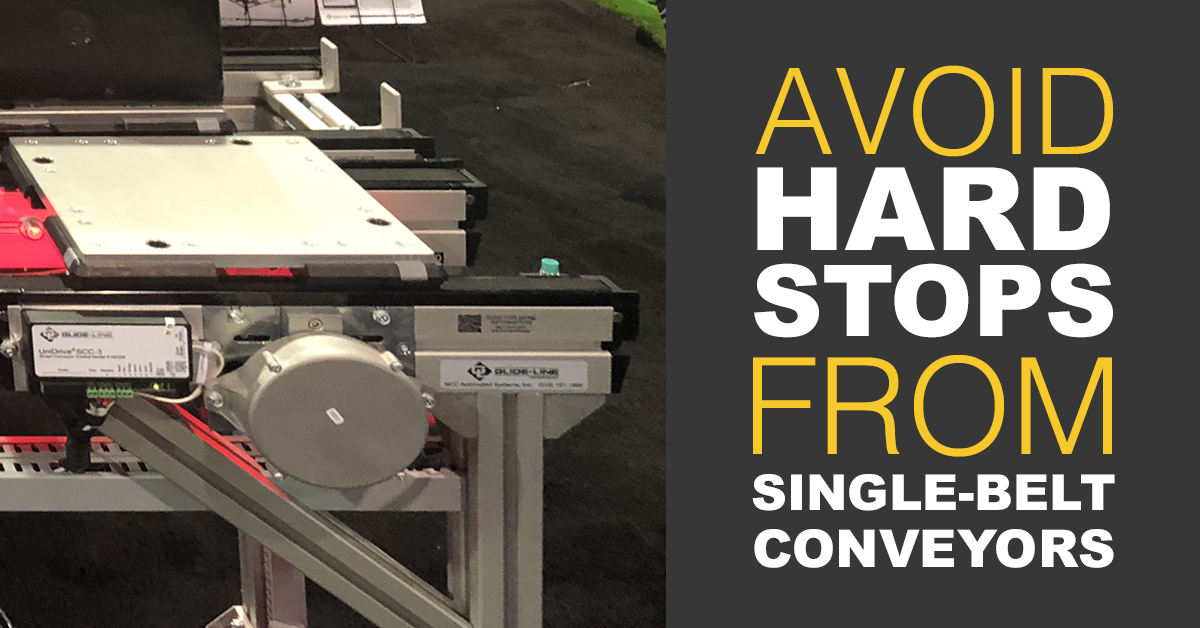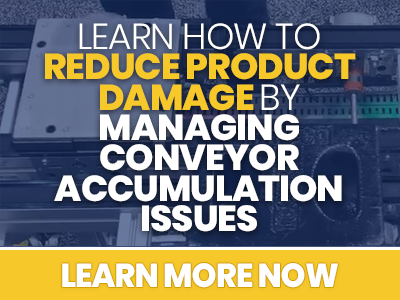When it comes to smooth handling, traditional conveyor transportation leaves a lot to be desired.
This is especially the case when moving and accumulating product between assembly stations. A stop in the line can easily cause pallets to bang into each other, leading to product damage. Many are searching for a better solution, so we introduced Glide-Line’s Zero Contact Zoned Conveyor.
With Glide-Line’s Zero Contact Zoned Conveyor solution, “hard stops” are a thing of the past. With products moving smoothly from station to station, partially and fully-assembled products can be handled without the risk of product damage.
Minimize Product Damage via Smooth Motion
Single-belt conveyors employ hard stops. A delicate product (say, a partially assembled Medical Device) moves down the line, and BAM! It hits the stop. This is anything but “smooth motion!” In addition, with single-belt conveyors, the belt keeps on running. This means upstream pallets will bang into other pallets, leaving products exposed to product damage. With a Zero Contact Zoned Conveyor system, this issue is eliminated. Instead of a single-belt, we use separate zones to move products down the assembly line.
In addition, the Zero Contact Zoned Conveyor doesn't do typical “pop-up” stops for traffic control. Instead, each zone has a sensor. When each separately-transported pallet reaches the zone, it triggers the sensor, telling the conveyor to stop. The conveyor (which typically uses its own dedicated DC motor and drive card) turns off. This means the separately-zoned conveyor makes a gradual deceleration until it makes the stop. The sensor also triggers the upstream pallets to stop, preventing them from banging into the stopped pallet.
Zero Contact Zoned Conveyors have built-in accumulation logic. This means you can automatically index products zone by zone, seamlessly moving product from station to station. This alone makes the Zero Contact Zoned Conveyor a great choice for production line conveyor systems. For specific acceleration/deceleration needs, the Zero Contact Zoned Conveyor’s analog input functions can provide a wide range of controlled speed.
Zero Contact Zoned Conveyors run only as needed. With separate zones preventing product contact, you can eliminate the risk of damaging your product.
Zero Contact Zoned Conveyor Logic Controls and Configuration Options
Most users are accustomed to using their PLC controls for their conveyor systems. But the Zero Contact Zoned Conveyor comes with logic controls of its own, which can save you on code, VFD’s, wiring, and many associated costs. Here are a few considerations worth exploring:
- Zero Contact Zoned Conveyor Logic controls are easy to install. All you need is a 24vDC source power
- With the Zero Contact Zoned Conveyor controls, there is no programming required for automatic queuing and accumulation
- Zero Contact Zoned Conveyor controls are robust, with a low failure rate.
- Zero Contact Zoned Conveyor controls are cost effective - no need for a centralized control system with a panel full of VFDs and dedicated wiring to the motors on the system.
- Additional zone specific control is available by means of local I/O on the integrated driver cards
- NOTE - you can also use the PLC to control all motion if you prefer
Using the Zero Contact Zoned Conveyor’s built-in controls improve conveyor performance and most certainly is the best way to keep products from banging into each other on the line. Keep this in mind when choosing the right conveyor solution. Concerned about configuration? Don’t worry, the Glide-Line team can help you develop the customized solution you need. Thanks to our IMPACT! configuration software, we can deliver a cost-effective solution in half the time of our competitors!
Ready to get started? Check out our FREE eBook, How To Manage Conveyor Accumulation Issues.







Leave a Comment